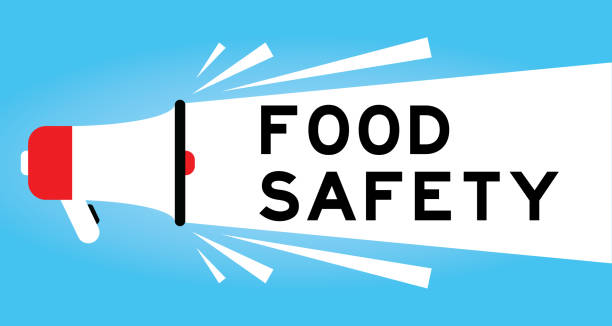Imagine you’re a warehouse manager. A big client calls, asking how you ensure their perishable goods—say, frozen seafood or fresh produce—stay safe in your facility. You’ve got procedures, sure, but can you prove they’re bulletproof? One misstep could mean spoiled inventory, angry clients, or worse, a food safety scandal. Scary, right? Now, what if you had a system that not only keeps food safe but also makes your warehouse the go-to choice for clients? That’s where ISO 22000 certification comes in. It’s not just a fancy stamp—it’s your playbook for running a safer, more reliable operation.
Let’s unpack why ISO 22000 is a game-changer for storage and warehousing providers.
What Is ISO 22000, Really?
Here’s the deal: ISO 22000 is a food safety management system (FSMS) designed to keep food safe from farm to fork—or in your case, from loading dock to delivery. It’s a set of guidelines that helps you identify risks, prevent mishaps, and stay compliant with regulations. Think of it like organizing your warehouse to avoid mix-ups: You label everything clearly, track inventory meticulously, and make sure nothing slips through the cracks.
Developed by the International Organization for Standardization (yep, that’s ISO), the standard boils down to a few core ideas:
- Spot the risks: From temperature control failures to cross-contamination, what could go wrong in your warehouse?
- Set up controls: Maybe you install better sensors or train staff on hygiene protocols.
- Keep improving: Monitor your processes, tweak what’s not working, and stay sharp.
It’s not about rigid rules—it’s about building a system that fits your operation. Simple, practical, and focused on keeping food safe.
Why Warehousing Providers Should Pay Attention
You might be thinking, “I’m just storing food, not cooking it—why do I need this?” Fair point, but food safety doesn’t stop at the processing plant. Your warehouse is a critical link in the supply chain, and clients expect you to deliver. ISO 22000 helps you do that in ways that hit home.
First, client trust. Food companies—whether they’re handling dairy, meat, or packaged snacks—want partners they can rely on. ISO 22000 shows you’ve got a handle on food safety, making you a safer bet than the uncertified warehouse down the road. A 2024 report by Food Logistics noted that 73% of food distributors prefer working with certified storage providers. That’s a competitive edge you can’t ignore.
Second, fewer headaches. Mishandling food can lead to costly recalls or lawsuits. ISO 22000 helps you catch issues early—like a faulty refrigeration unit—before they spiral. One Midwest warehouse cut spoilage incidents by 25% after implementing stricter temperature monitoring as part of their FSMS.
Getting Certified: It’s Not as Scary as It Sounds
Okay, let’s talk about the certification process. I know, it sounds like a mountain of paperwork and stress, but it’s more manageable than you’d think. Here’s how it works, step by step.
- Gap Analysis: Take a hard look at your current setup. Are your temperature logs solid? Do you have clear hygiene protocols? This is like checking your warehouse layout for bottlenecks.
- Build Your FSMS: Create policies and procedures to address risks. For example, you might set up a schedule for equipment checks or document how you handle spills.
- Train Your Team: Get everyone—from forklift drivers to supervisors—on board. Make it clear why this matters (hint: it protects their jobs, too).
- Internal Audit: Test your system. Are you hitting your safety goals? If not, fix the weak spots.
- Certification Audit: An external auditor reviews your FSMS. Pass, and you’re certified. If you need tweaks, they’ll guide you.
The process typically takes 6-12 months, depending on your warehouse’s size and complexity. Sure, it’s work, but it’s not rocket science. Plus, consultants can help if you want to speed things up.
Here’s a little encouragement: You don’t need to be flawless. ISO 22000 is about steady improvement, not perfection. You’re building a system that grows with your business.
These stories show what’s possible when you commit. It’s not just about avoiding problems—it’s about building a reputation that opens doors.
Overcoming the Humps: You Can Handle It
Let’s not sugarcoat it—getting ISO 22000 certified has its challenges. But knowing what’s coming makes it easier to tackle. Here are the big ones and how to deal with them.
Cost and Time: Certification isn’t free. You’re looking at $8,000-$20,000 for audits, training, and maybe consultants, depending on your operation. Plus, it takes time—time you’d rather spend on operations or chasing new clients. But think of it like reorganizing your warehouse for efficiency: The upfront effort saves you headaches down the line.
Team Resistance: Your staff might groan about new procedures or extra training. “More work?” they’ll say. The trick is to show them the bigger picture—safer food means happier clients and steadier business. Maybe sweeten the deal with a team lunch or some recognition for their efforts.
Complexity: If you’re managing multiple warehouses or diverse products, aligning everything with ISO 22000 can feel like juggling flaming torches. Start small—focus on one facility or one process, like temperature control. Build from there, and it’ll feel less daunting.
Here’s an analogy: Setting up ISO 22000 is like optimizing your warehouse layout. It’s a bit chaotic at first—moving pallets, rethinking flows—but once it’s done, everything runs smoother.
Beyond the Certificate: The Bigger Picture
You know what’s great about ISO 22000? It’s more than a certificate to frame on your office wall. It’s a way to future-proof your business in a world that’s increasingly obsessed with food safety and transparency.
Supply chains are under a microscope right now. Consumers want to know their food is safe, and clients want partners who can prove it. ISO 22000 aligns you with that demand, making your warehouse a trusted link in the chain. Plus, it ties into broader trends like sustainability. Many warehouses are pairing ISO 22000 with environmental standards like ISO 14001 to appeal to eco-conscious clients.
And here’s a seasonal tie-in: As we head into the busy summer of 2025, with food demand spiking for events and holidays, clients are prioritizing reliability. Certified warehouses stand out, especially when recalls or safety scandals hit the headlines. Being ISO 22000 certified says, “We’ve got this.”
There’s an emotional angle here, too. Running a warehouse isn’t just about moving boxes—it’s about ensuring families get safe food on their tables. That’s something to be proud of, isn’t it?
Your Next Move: Start Today, Win Tomorrow
Ready to take the plunge? You don’t have to overhaul your entire operation overnight. Start with a gap analysis—many certification bodies like DNV or Intertek offer free initial assessments. Identify one or two areas to improve, like tightening your cold chain processes or updating your cleaning logs. Get your team involved early to build buy-in.
ISO 22000 isn’t just about checking boxes—it’s about building a warehouse that clients trust and regulators respect. In a competitive market, that’s the kind of edge that sets you apart.
So, what’s holding you back? Grab that opportunity, and let’s make your warehouse the gold standard for food safety.



